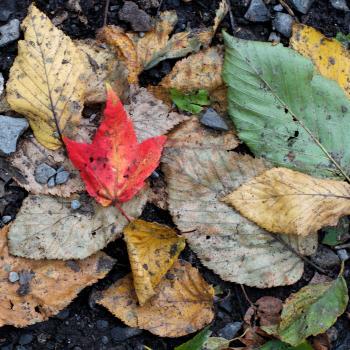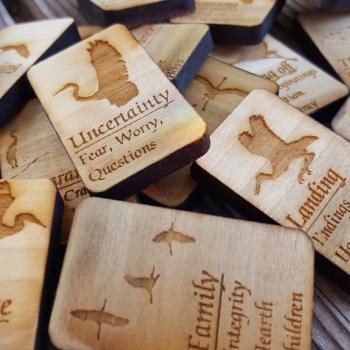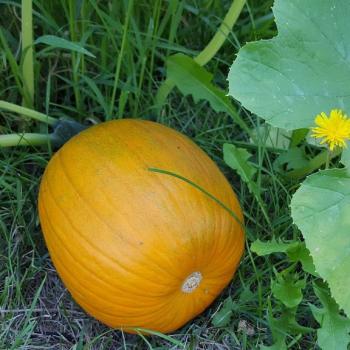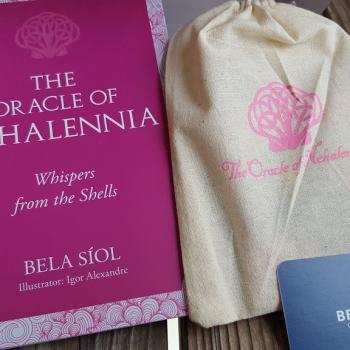 I must admit, I am not a big fan of Joseph Campbell. I know, this is about as close to blasphemy as we Pagans get, but nonetheless I could never really get behind the ideas of the monomyth and the Hero with a thousand faces. It has always seemed so reductionist to me, erasing the important and relevant details in favor of a bland and uninspiring story. So it was with a bit of hesitation (but only a bit, I do love my books!) that I decided to participate in Patheos’s Book Club and take some time out to read Jane Eyre’s Sisters: How Women Live and Write the Heroine Story by Jody Gentian Bower.
I must admit, I am not a big fan of Joseph Campbell. I know, this is about as close to blasphemy as we Pagans get, but nonetheless I could never really get behind the ideas of the monomyth and the Hero with a thousand faces. It has always seemed so reductionist to me, erasing the important and relevant details in favor of a bland and uninspiring story. So it was with a bit of hesitation (but only a bit, I do love my books!) that I decided to participate in Patheos’s Book Club and take some time out to read Jane Eyre’s Sisters: How Women Live and Write the Heroine Story by Jody Gentian Bower.
I was instantly fascinated. While I have never identified with the Hero’s journey, the women that Jody writes about immediately sprang up from the page for me. I had read these stories, over and over and over again, with many characters by many authors. The Heroine, or as Jody often refers to her, the Aletis, begins her quest by running away. Sometimes this is from an oppressive and dark childhood; sometimes it is from a perfect childhood that feels stifling.
Often, the Heroine runs away from her childhood by marrying or entering a relationship with the wrong man, where she learns that the oppressive attitudes of her youth are pervasive in the culture around her. Upon this realization, she runs away again, often into the wild where she is allowed to find herself free from the expectations of society. Sometimes in the wild or forest she will meet a woman of power, a witch or madwoman, who shows her a new way of being.
Finally, the Heroine comes back to her old place in society, to her old life; but because she is utterly transformed, she does not fulfill the same roles she once did. In fact, she now knows how to pursue her happiness, and is equipped to handle oppressive culture on her own terms.
Having grown up with this story, reading it again and again, I find that I place a great deal of value in it. I certainly wish to be a strong and liberated woman, unconstrained by the expectations of those around me. In the past, however, it was very difficult for me to reconcile these desires with the general Heathen ethic that promotes community above individualism. Nor are there many examples of the Heroine’s Journey in Norse sources. Freya is perhaps the best example; while we do not see Her journey, we do see Her acting with great agency outside of society’s expectations. Once when Thor and Loki promise Her marriage to a Giant, Her wrath is enough to cause an earthquake and break Her famous necklace.
Of course I value my greater community and my family very highly. Unlike many of the Heroines Jody writes about, I am not willing to pack up and leave these things completely – in the real world outside of literature, there’s little guarantee that they will still be there when I return. Also unlike the Heroines in Jane Eyre’s Sisters, I have been lucky enough that I have found a very open and supportive greater community, one that gives more to me than I could possibly give back. I am hardly repressed by the ideas and expectations of the local Heathens and Pagans!
But this does not render the Heroine’s journey meaningless for me. Instead, I find it in small snatches of my everyday life. I am surrounded by wise women who have been on this journey themselves, and who have happily settled into a life unconcerned with the dictates of society. These are my witches, helping and guiding me when I am temporarily lost. I run away and find my wilderness every once in awhile, going down to the river or off into the woods for an afternoon on my own. These little things and little moments are so empowering. They are what gives me the energy to be a contributing part of my community, to continue to shake my head at expectations and to help in my own way.
















